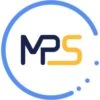Any successful business grows and changes qualitatively over time depending on market demands and technological capabilities. So permanent improvement is essential for enterprise prosperity in a modern alternating environment. Strategies, product capacities, customer desires, and digital tools are constantly altering. So managers should provide an Agile approach for business adaptation within the most unexpected situation to improve productivity and co-workers\' interactions.
Pandemic forced people to go online and exercise routine tasks somehow, trying to stay afloat with the dozens of remote employees. Companies face the issue of ensuring that everyone remains updated on the recent changes and understands business strategy, brand goals, and their role in this working mechanism. And here, the learning management systems (LMS) came to the rescue with overall training and onboarding for employees, including new hires\' arrival.
Now brands got a centralized source of knowledge for quick, efficient, and engaging staff upgrading instead of separate docs, slides, maps, exhausting and not always comfortable meetings. Presently, every business can grow internally and bring profit with scalable platforms on the LMS base.
In this article, the MPS editorial board figured out the purpose of the learning management system, its strong possibilities, and working principles. So, keep on reading!
What is a Learning Management System?
LMS is scalable software for creating, administrating, and organizing a complex teaching process. An application or web platform commonly has two main constituents: a server for coordinating primary operations and a customer interface for instructors, employees, or scholars.
How to use LMS? Within the learning management system for students or workers, instructors can compose and deliver lessons to a large public and monitor learners\' participation. People, in turn, access academic materials from any convenient place and helpful application features, like videoconferences or discussion chats.
Medical and educational institutions and enterprises of any size widely use scalable platforms for staff upskilling. LMS scalability means the system can be upgraded according to the new teaching demands. By improving classic schooling methods, such management tools support learners\' knowledge base with the relevant information and keep a high level of their professional growth and skills boost. In addition, we face significant benefits of LMS for teachers reflecting in time and costs economy while organizing the study and simple process monitoring.
What is a learning management system in the education industry and business? It’s a tool that proposes easy management of users\' registration and access, topics plan, calendar, participants interactions (instructor - employees), customers progress analytics, notifications, and control tests.
There are several LMS types with various peculiarities and advantages for modern enterprises. Let’s dive deeper into their best implementation practices.
LMS basis: types, benefits, and areas
So, let’s define what are the learning management systems differences: they lie in description parameters and reflect in prices. Entrepreneurs should choose the LMS that better suits their objectives, scale, and budget. These are the main types of learning management systems, and now we will explain them in detail.
Installed
It’s a classic program available for download on your personal computer. This option may seem not that progressive, but it still finds appliances on the companies’ servers. The system requires an internal IT team for its maintenance and customization. Complicated updating and expenses may become crucial cons for this option.
Web-based
These LMS systems for business don’t need to be installed on a device and run right from the browser. The software developer is responsible for all updates, management, and support within a subscription plan.
Cloud-based
Such learning management systems represent a software-as-a-service (SaaS) business model and are maintained and upgraded by their providers. With a personal account, customers can visit the platform from any place and device, using a login and a password.
Self-hosted
It’s a web-based learning management system type your IT experts should maintain themselves. With ample personalization space, businesses should also take care of the program\'s security and upgrading.
Open-sourced
This free-to-use software allows flexible content changes and implementation of ideas for a successful LMS design. Customization of a training platform for the brand’s requirements brings the necessity of full system support by IT specialists.
Mobile
These systems run from personal devices, allowing learners to reach the material without bindings to a desktop or a workplace.
Learning management systems for small businesses and large corporations also differ in price. They are divided into
- free, with basic features and additional fees for advanced functionality;
- subscribed, with monthly or annual payments;
- licensed, where a buyer pays once for the unlimited usage or a limited period with the renewed fees.
LMS satisfies teaching needs in various fields. Firstly, they are provided in educational institutions as an excellent way to share materials and analyze academic performance. Learning management systems for schools allow connecting numerous groups for simultaneous remote studying, creating test questions, marking children\'s attendance, and other customizable features.
Secondly, LMS are widely integrated into the company\'s environment for employees upgrading. Training systems are a powerful instrument for helping new workers know the corporate life, brand journey, and future goals. Training with LMS gives an excellent opportunity to boost staff skills conveniently and engagingly. With the rising level of digitalization and business scaling, we can’t allow our employers to be incompetent. But LMS practices can guarantee a comprehensive staff education with in-built learning materials along with the opportunity to create unobtrusive content customized for the company’s needs.
Moreover, LMS provides gaps detection in employees\' proficiency and improves their skills with appropriate courses. By boosting their knowledge, leverage workers could solve rising issues independently without outside help. Thus, subordinates would become interchangeable “universal soldiers”, increasing the organization\'s efficiency.
Businesses implement training systems for internal purposes and also for representing their products. Thus, software development companies create educational content to tell users about the service and its functionality. Customer training is crucial to estimate brand loyalty and provide an excellent user experience. The e-learning platform scale should allow you to add as much content as you require without overloading.
LMSs will be beneficial in organizing collaborative training. It differs from the courses maintained by top managers for employers. Here, workers can create manuals by themselves, exchange opinions, share personal experiences in the appropriate field, and support dialogue. Such an educational process becomes more dynamic and raises the level of employees’ engagement.
Drawing the main areas for using LMSs, let’s find out how to scale your business with a learning management system. The answer is simple: enjoy the maximum benefits provided by e-learning platforms in your brand’s development:
- Reduce costs and time in delivering educational instructions.
- Easily create different content and give customers access from one place.
- Customize online training within the brand’s value.
- Apply the learning management system features to monitor the course\'s effectiveness and users\' progress.
- Break time, devices, and location limitations.
LMSs represent a space for organizing and storing large amounts of customers’ and educational information. This helps to quickly find, sort, and update materials and other data. Therefore, scale in an e-learning system must be adaptive to accommodate all the content and continue a smooth functioning. Companies should be concerned about this issue, checking LMS\'s advantages and disadvantages and selecting the platform for optimal work.
But before you start examining e-learning systems, let’s see how instructors and customers participate in this digital area.
Benefits of Using Mobile Apps in the Education Sector
How do learning management systems work?
Consider that LMS is the massive virtual storage with an organized hierarchy. Instructors, meaning corporate managers or other responsible persons, fill the system with educational content and provide application access to the employees through their companies’ server or program downloading on each device.
Customers can create personal profiles and enter the repository under their nicknames. Here is a basic LMS requirements template characterizing a good e-learning platform:
- creating lessons and organizing catalogs (for admins and instructors);
- forming analytics and reports on their material\'s performance;
- automating repetitive tasks for groups’ maintenance;
- providing courses’ gamification to motivate customers during their studies;
- applying social media tools for collaboration with other users and making experience exchange.
Good LMS also allows downloading content, making it accessible even offline, and provides an intuitive customer interface. Effective educational platforms are user-friendly, easy to navigate, and comparable with the organization\'s goals and people’s abilities. Some good examples of learning management systems are listed below...


